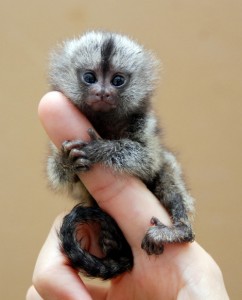Marmosets are small, squirrel-like primates found in South America. They are considered to be the most primitive species of monkeys as they lack the ability to even change their facial expressions (*1). However, Marmosets were recently found to have a new skill that makes them more special than most animals. While different animals are known to call onto each other for purposes of mating or territorial defense, Marmosets have taken it to a new level of actual conversing.
This discovery moves marmosets from being cute animals, to being courteous and knowledgeable of socially acceptable manners of communication. Conversations between marmosets could last up to 30 minutes, where individuals were found to wait for their turn in the conversation, and never interrupt each other’s “talking”.
“We were surprised by how reliably the marmoset monkeys exchanged their vocalizations in a cooperative manner, particularly since in most cases they were doing so with individuals that they were not pair-bonded with,” said Asif Ghazanfar, one of the study’s authors.
During the study, marmosets were placed in opposite corners of the study room. Barriers were placed between studied individuals so as to prevent them from seeing each other, making interaction through their voices their only mean of communication. Marmosets were found to make contact calls accordingly. These calls were produced in turn; while one individual makes their call, the other waits 5 seconds after their friend finishes then responds with another call.
Turn taking was not the only impressive thing revealed in the study, Marmosets were actually found to imitate the speed of their partner’s call. One would slow down if their partner’s speed while “conversing” was slow, and vice versa.
Such interactions are also reportedly used by these animals in order to communicate details about themselves; other members of the species could find about one’s gender, identity, and social group from such conversations.
“We are currently exploring how very early life experiences in marmosets-including those in the womb and through to parent-infant vocal interactions-can illuminate what goes awry in human communication disorders,” Ghazanfar stated
Sources:
Photo credits: In Cherl Kim / Everland Zoo




